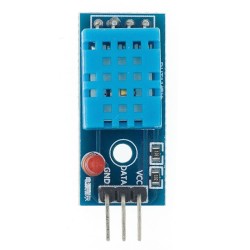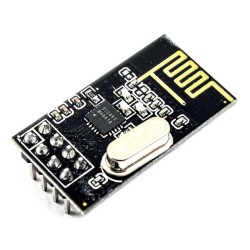NE555 NE555P Oscillator / 555-Timer High Precision Oscillator Chip DIP8-IC
- Brand: Other Brands
- Product Code: OCPS441560125
- Availability: 100
-
₱30.00
NE555 is a widely used integrated circuit (IC) that functions as a timer, pulse generator, and oscillator. It was designed by Hans R. Camenzind and introduced by Signetics in 1972. The NE555 is versatile, reliable, and easy to use, making it popular in various electronic applications.
Key Features:
Astable Mode: In this mode, the NE555 operates as an oscillator, generating a continuous square wave output. This mode is used in applications such as blinking LEDs, pulse-width modulation (PWM), and clock generation.
Monostable Mode: In this mode, the NE555 acts as a one-shot timer, producing a single pulse in response to a trigger input. It is commonly used for timing applications, such as debounce circuits, timers, and pulse generation.
Bistable Mode: In this mode, the NE555 operates as a flip-flop, having two stable states. It can be used for applications requiring toggle switches and simple memory elements.
Wide Supply Voltage Range:The NE555 can operate with a supply voltage (Vcc) ranging from 4.5V to 15V, making it suitable for both low and high voltage applications.
Adjustable Duty Cycle:The duty cycle of the output waveform can be easily adjusted using external resistors and capacitors.
High Output Current:The NE555 can source or sink up to 200mA, allowing it to drive LEDs, relays, and other loads directly.
Temperature Stability:The NE555 has good temperature stability, making it reliable for use in various environmental conditions.
Pin Configuration:
The NE555 typically comes in an 8-pin DIP (Dual In-line Package) or SOIC (Small Outline Integrated Circuit) package. The pin configuration is as follows:
* GND: Ground (0V) connection.
* Trigger: Input pin that triggers the timing interval when it falls below 1/3 of the supply voltage.
* Output: The output pin provides the timing signal.
* Reset: Active low input to reset the timing interval; often connected to Vcc if not used.
* Control Voltage: Allows overriding the 2/3 Vcc threshold; often connected to a capacitor for noise filtering.
* Threshold: Compares the voltage to 2/3 Vcc and resets the flip-flop if the voltage exceeds this value.
* Discharge: Discharges the timing capacitor in astable and monostable modes.
* Vcc: Positive supply voltage.
Usage & Applications:
* Timers: Used for creating precise time delays or intervals.
* Oscillators: Generates square wave signals for clock pulses in digital circuits.
* Pulse Generation: Produces pulses of specific duration for triggering and timing purposes.
* PWM (Pulse-Width Modulation): Controls the duty cycle of pulses for applications like motor speed control and dimming LEDs.
* Debouncing Switches: Removes noise and bouncing effects in mechanical switches.
* LED Flashers: Creates flashing effects for LEDs.
* Tone Generation: Produces audio tones in sound circuits.





